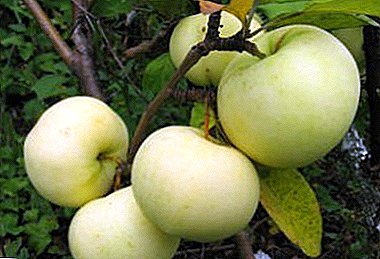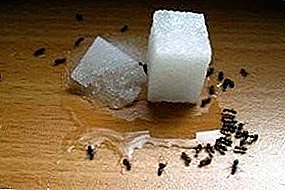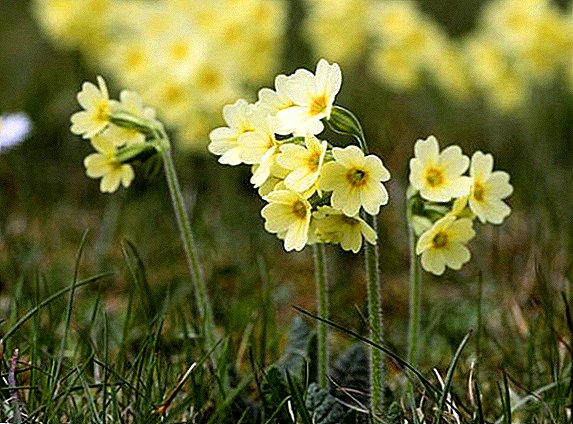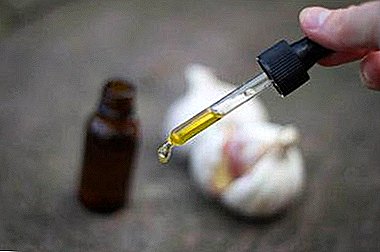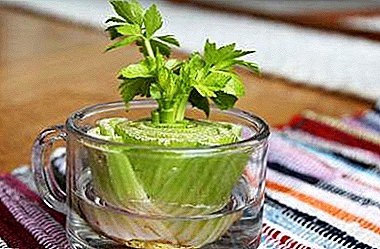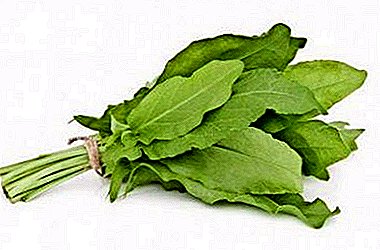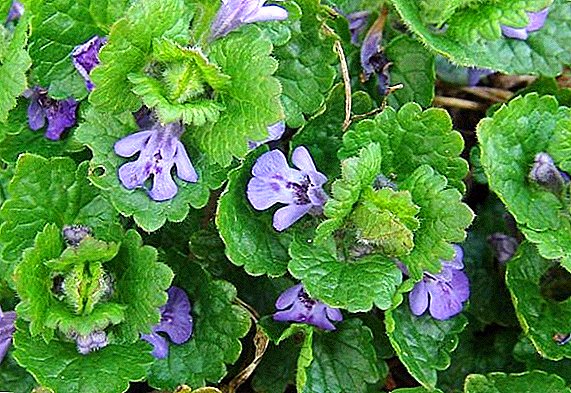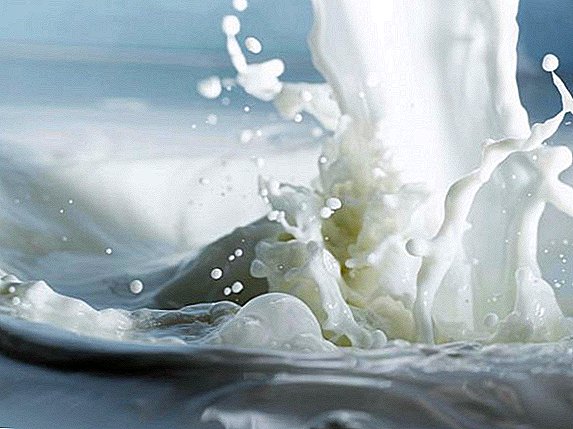
Radish French breakfast is now gaining popularity. And there are a number of reasons for this: early shoots, the possibility of growing both in an open garden and in greenhouse conditions.
If you comply with all the conditions of growing French breakfast, cylindrical vegetable will rise within 27 days.
The article describes the main varietal characteristics and rules for growing, collecting and storing the crop. And also show a photo of this variety of radish.
Features
Variety description
Fruits grow high quality, reviews of agronomists receive only positive. The length of the roots often do not reach more than 6 centimeters, and the radish diameter is usually about 2-2.5 cm. Fully ripened vegetables have a bright red color. At the ends of the fruit there is a characteristic white spot.
Sheet rosette in this variety is quite powerful and straight. Radish Pulp French breakfast has a rather thick texture, it tastes crispy, juicy and medium sweet. In the middle of the fruit there is no bitterness and no voids are formed.
The harvest has the ability for a long time to maintain the presentation.
The described variety belongs to all-season plants. This means that radishes can be planted at the very beginning of spring and at the end of autumn. This ability makes it possible to get several harvests in one season.
Sowing time
 French breakfast belongs to the early ripening varieties. In the greenhouse it can be sown in late March-early April.
French breakfast belongs to the early ripening varieties. In the greenhouse it can be sown in late March-early April.
After 5-7 days, the first shoots will appear that can be transplanted into the open ground. after the appearance of several leaflets on the saplings.
Due to the fact that the variety has excellent resistance to frost, radishes can be sown in September. By the first cold weather, the culture will be ready for harvest.
Average weight
The average weight of a root is 15-20 grams. Such a weight can be achieved only with proper care during growing. In some cases, the mass may be even less.
Where is it recommended to sow?
The French breakfast is great for growing in different conditions. Seeds can be sown immediately in open ground, as soon as it warms up. Or you can plant a seed under the film and leave the seedlings until harvest. Both in the first and in the second case, the yields will be excellent.
Resistance to illness
Like many hybrid varieties, the French breakfast has good resistance to various ailments and pests, in particular to color flow. It is also worth noting that radishes do not form voids during late harvest.
Ripening
As soon as the first shoots of radish appear, agronomists can wait for the harvest in 22-25 days. Sometimes ripening can take up to one month.
What kind of soil does it prefer?
Radish loves light and nourishing soils. Sand and clay substrates are most suitable for planting this vegetable. The acidity of the soil should be maintained at a neutral level, low acidity will also work. To reduce the level of acidity, you need to add a little lime to the soil.
How much is stored crop?
Under all storage conditions, the harvested crop may lie for about a month. And while the culture does not lose its presentation.
The number of radishes from one square meter
If properly care for radish, you can get about 1-1.5 kilograms of culture with 1 square meter.
Sometimes yields may increase by another 100-200 grams.
A photo
And this is what this sort of photo looks like.



Breeding history
This variety was bred by Dutch botanists in the early 2000s. In Russia, it is officially registered after a couple of years. During this time, the variety has become one of the most popular among agronomists.
What is the difference from other species?
The main difference from other varieties of this vegetable is a form of French breakfast. It is cylindrical, unlike other varieties.
Advantages and disadvantages
We list the main advantages of the French breakfast variety over other types.
- Good portability of transportation.
- Resistance to diseases and attacks of pests.
- Friendly germination, which allows the gardener to harvest the entire crop at a time.
- Early dates of sowing and ripening.
- Ability to get several harvests per season.
- Frost resistance
Among the disadvantages are the following:
- Low weight and dimensions of root crops.
- Relatively high yield.
What and where is it used for?
Best of all radish French breakfast is suitable for cold dishes: appetizers, soups, and also in the form of a separate independent dish.
Growing rules
 The described variety of radish prefers well-lit areas, but it is important to remember that it is necessary to shade the crop during special heat hours. But at the same time it is impossible to allow the vegetable to grow in full shade, because in this case all growth will go into leafy plates.
The described variety of radish prefers well-lit areas, but it is important to remember that it is necessary to shade the crop during special heat hours. But at the same time it is impossible to allow the vegetable to grow in full shade, because in this case all growth will go into leafy plates.
It is best to apply a special mesh, which will provide access to light, but at the same time protect the vegetable from burns. Also pay attention to the airing and to the fact that the site was not drafts.
- Water radish French breakfast is necessary every two to three days. This should be done only in the morning or after sunset. Otherwise, water droplets can burn the surface of the vegetable. It is necessary to water culture only under root system. And after moistening the soil, it should be loosened by about 3-5 centimeters so that the earth does not clog and a crust does not form. In case of a lack of moisture, the roots will grow bitter and flabby.
- Air temperature should not exceed 25 degrees Celsius. Minimum indicators - 15-18 degrees above zero. If the temperature is more than +25 degrees, the culture will only begin to bloom, and the roots will not form.
- Feed radish French breakfast should be every two weeks. Choose for this the best ready-made complexes. It is necessary to plant them only according to the instruction, not exceeding a dosage.
Collection and storage
Due to the fact that the fruits sprout at the same time, it is easier to collect. Store the harvest is best in the basement, the temperature of which varies from 5 to 8 degrees Celsius - in sub-zero temperatures the radish will not survive for long. Prior to this, the basement must be prepared by treating all surfaces with lime - this will protect the room from malicious insects.
Putting radishes is best in wooden boxes with holes for good ventilation. In this form, the vegetable can be stored for about a month. If the harvest is not rich, it is quite possible to put it in the fridge.
Diseases and pests
The main danger for this radish is cruciferous flea. Presented in the form of small bugs that damage the leaf plates, thereby destroying the entire plant completely. The next enemy of radish is the white-haired. This is an insect that is walking on a butterfly with wings with a dark edging.
Attention! It is very important to save the vegetable from this pest during the first shoots, otherwise it may destroy the entire crop.
You can fight these insects in several ways:
 Treatment with ash solution. Preparing the solution in the following way: in 10 liters of pure water, add two glasses of ash and mix everything well. There should be several such treatments with a break of seven days.
Treatment with ash solution. Preparing the solution in the following way: in 10 liters of pure water, add two glasses of ash and mix everything well. There should be several such treatments with a break of seven days.- a solution of mustard, salt and red pepper. To prepare it, take 10 liters of water, two tablespoons of mustard and salt, and one teaspoon of pepper.
- If the biological method does not help in the fight against the pest, it is necessary to turn to insecticides. Their use should be strictly according to the instructions.
Of the diseases include the following:
- kila;
- blackleg;
- bacteriosis.
You can fight with illnesses:
- using broth onion peel (water and husk in a ratio of 2: 1);
- Bordeaux liquid (for processing take 1% of the drug);
- soap solution (50 grams of soap and 40 grams of copper sulfate dissolved in 10 liters of water).
All described solutions need to insist throughout the day and only then used as a therapeutic agent.
Prevention of various problems
To avoid any difficulties during the cultivation of radish French breakfast, it is enough just to follow the above tips. If you follow all the recommendations, you will get a great harvest. at home.
What is it like?
Similarity is manifested in the appearance of root vegetables. So these are the following varieties:
- "18 days";
- "Polinka";
- "Lady fingers";
- "Angelica".
We must pay tribute to modern breeders for the fact that they allow agronomists to get a great harvest, without putting a lot of effort and a lot of time.


 Treatment with ash solution. Preparing the solution in the following way: in 10 liters of pure water, add two glasses of ash and mix everything well. There should be several such treatments with a break of seven days.
Treatment with ash solution. Preparing the solution in the following way: in 10 liters of pure water, add two glasses of ash and mix everything well. There should be several such treatments with a break of seven days.